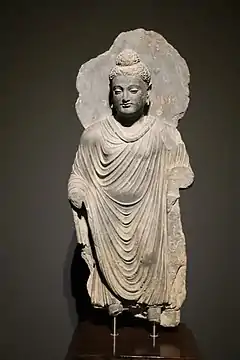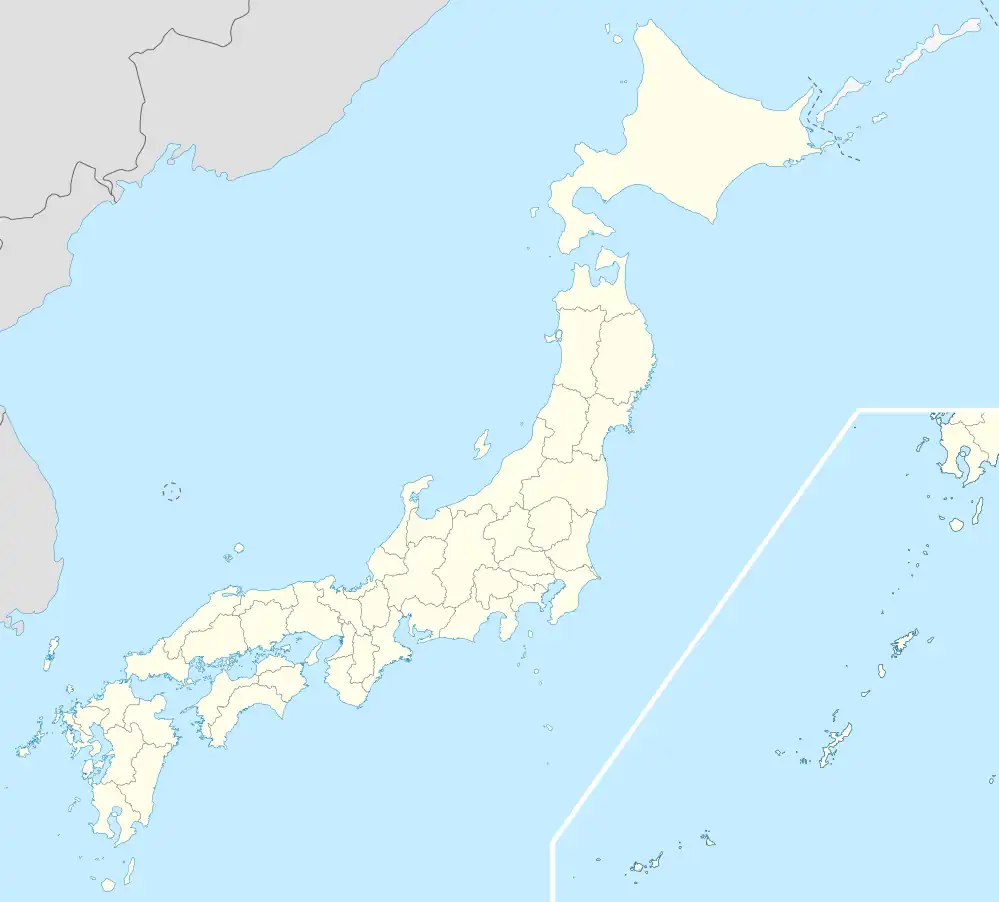平山郁夫シルクロード美術館 | |
 Gandhara Buddha | |
 Location within Japan | |
| Location | 2000-6 Nagasakacho Koarama, Hokuto, Yamanashi 408-0031, Japan |
|---|---|
| Coordinates | 35°52′45″N 138°21′34″E / 35.879116°N 138.359384°E |
| Type | Archaeology museum |
| Website | https://www.silkroad-museum.jp/english/ |
The Hirayama Ikuo Silk Road Museum is a Japanese museum named after the painter and collector Ikuo Hirayama.[1][2]
The museum opened in 2004 in the Yamanashi region of Japan.[3] It is one of the few and significant museums about the Silk Road, to be located outside of China.[4]
Many of the objects of the collection were exhibited in China in 2018–2019.[5]
 Stone palette
Stone palette Bactrian statuette
Bactrian statuette Greek gods
Greek gods Gandhara Atlas, 2nd-3rd cent. CE
Gandhara Atlas, 2nd-3rd cent. CE Vajrapani, Gandhara, 3rd-4th cent. CE
Vajrapani, Gandhara, 3rd-4th cent. CE Buddha, 2nd-3rd cent. CE
Buddha, 2nd-3rd cent. CE The Buddha and Heavenly kings, 2nd-3rd cent. CE
The Buddha and Heavenly kings, 2nd-3rd cent. CE The Buddha's First Sermon, 2nd-3rd cent. CE
The Buddha's First Sermon, 2nd-3rd cent. CE
References
- ↑ Srinivasan, Doris (2007). On the Cusp of an Era: Art in the Pre-Kuṣāṇa World. BRILL. p. 286. ISBN 978-90-04-15451-3.
- ↑ Stubbs, John H.; Thomson, Robert G. (10 November 2016). Architectural Conservation in Asia: National Experiences and Practice. Routledge. p. 57. ISBN 978-1-317-40618-1.
- ↑ Winter, Tim (2022). The Silk Road: Connecting Histories and Futures. Oxford University Press. p. 186. ISBN 978-0-19-760505-9.
- ↑ Clarkson, Persis B.; Santoro, Calogero M. (29 November 2021). Caravans in Global Perspective: Contexts and Boundaries. Routledge. p. 100. ISBN 978-1-000-50419-4.
- ↑ "Silk Road Antiquities from Hirayama Ikuo Collection, at the National Museum of China". en.chnmuseum.cn.
This article is issued from Wikipedia. The text is licensed under Creative Commons - Attribution - Sharealike. Additional terms may apply for the media files.